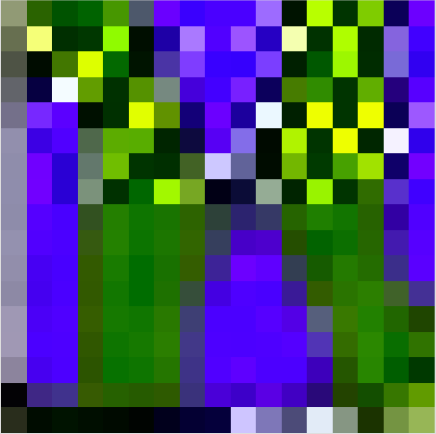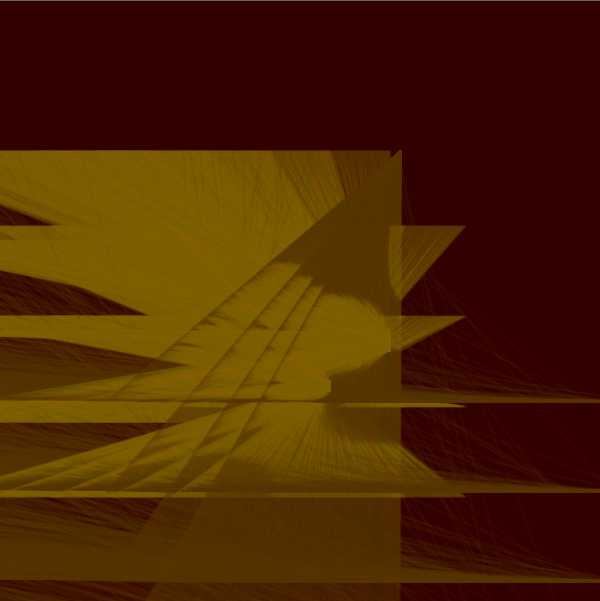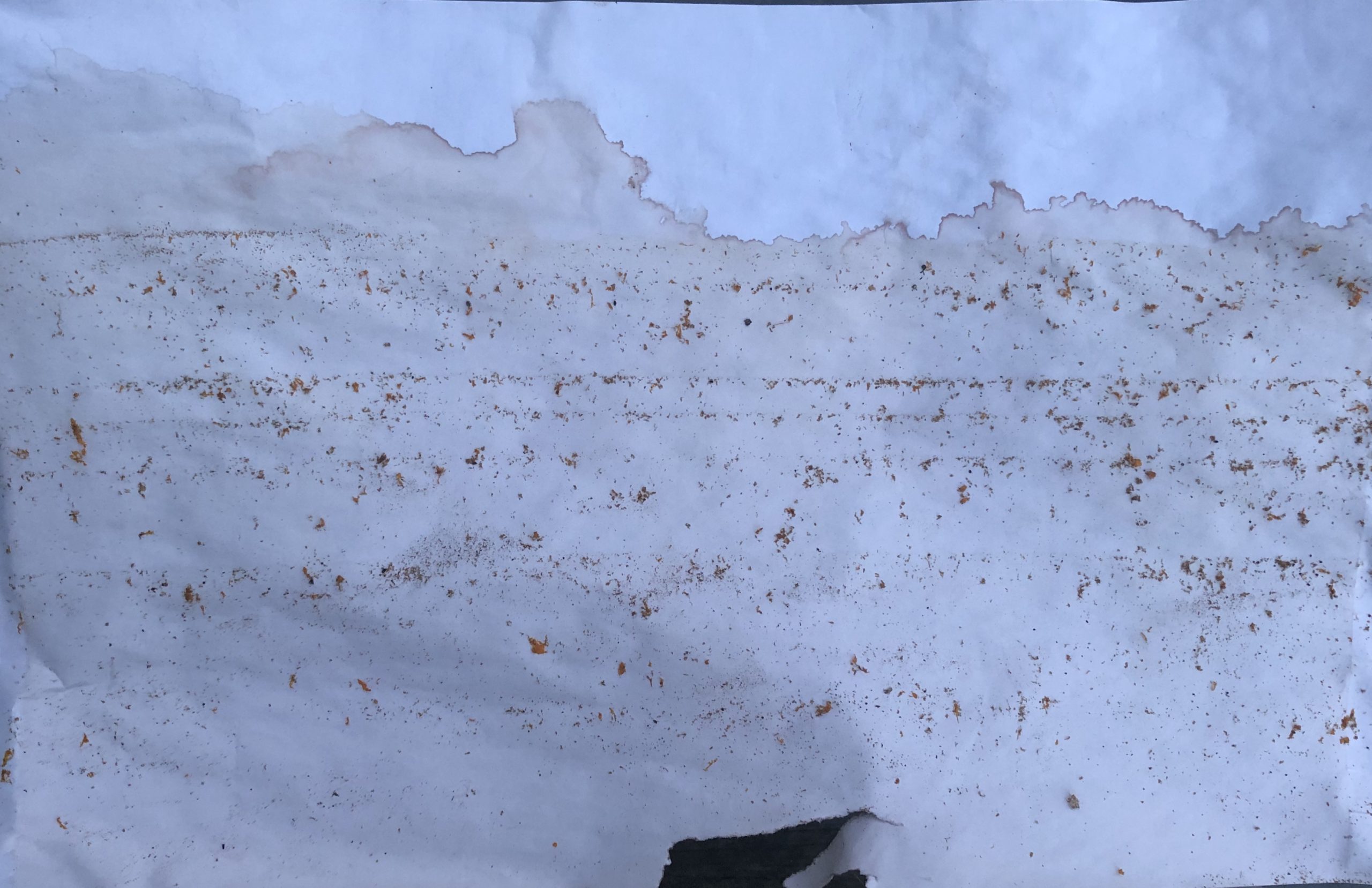
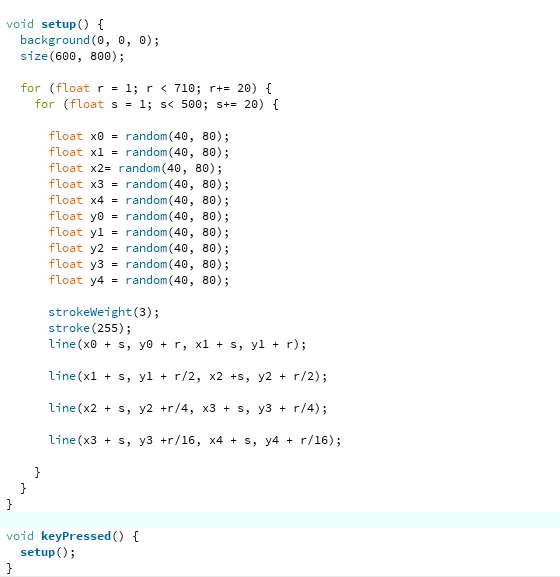
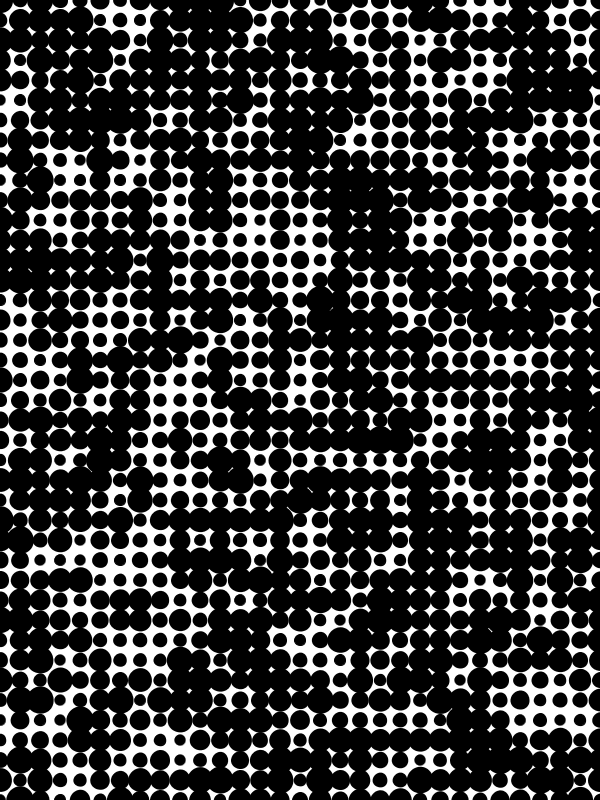


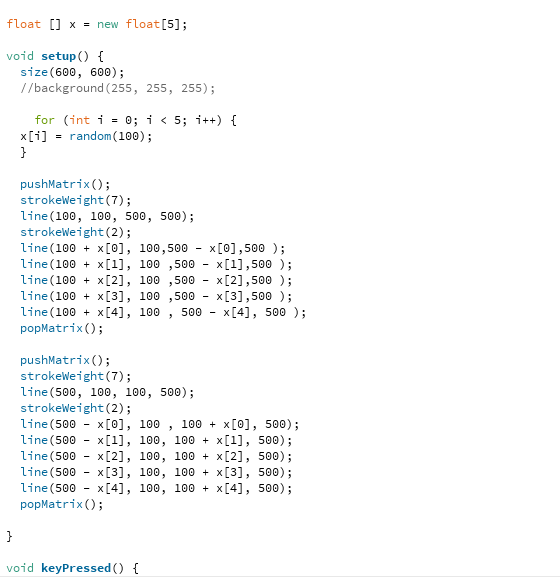
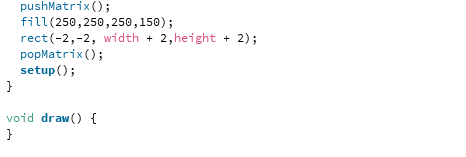
For my response to Georg Nees I did three separate instances of a pattern showing random progression. By doing this I was able to experiment with three different formal patterns but lost some experience by not sticking with one pattern and pushing it as far as I could. When I give myself constraints to work within is usually when I am the most surprised and inspired but what comes out of the randomness function. I did have surprises when creating theses three patterns but I think if I stuck with one of them longer I could have understood how Nees’ mind works on a deeper level.
#1 came from altering the code for the 8-square. I used only one line of the eight, so it became a ‘1-square’. I also made the spacing between each square smaller so that the lines would look more random. At this point I had what the bottom half of #1 looks like across my entire screen. There was no formal pattern apparent so I added one. I layered three of the random single line pattern on top of the first. Each layer added is compressed by the square of the previous, excluding the jump from the first layer to second, which was compressed by half. This added order to the piece and also visually references Gravel with the progression of randomness vertically descending down a rectangle. The order in this piece is not as present and structured as many on Nees’s works. So I gave the choice to layer the piece on top of itself with the keyPressed() command. This emphasizes the pattern of the compression. The emphasis is temporary, because eventually a point is reached where the layers make the image a cohesive scribble of white. I enjoyed working ‘backwards’ to Nees’s style by starting with a stochastic image and then formalizing it.
For #2 I wanted to follow Nees’s style of starting with a formal pattern and showing its transition to stochastic. #2 started with a grid of ellipses. Control was given to the computer through the random function added to the strokeWeight() of a ellipse. I did constrain the random function from (0,16), so that the formal structure of the piece, the grid, would still be visible. Where the transition of formal to stochastic is visible in this piece is similar to where it is in the 8-square or 23-square. By comparing a specific ellipse to another the random variable becomes apparent. In my piece, it is more obvious that each circle various rather than each square varying in Nees’s work. This is because the size of the ellipse is what is changing in mine, and size is an element of art that is very evident to humans. The ellipses are a solid color as well. Nees’s squares are not solid, they are made up of lines, an their size does not vary, the location of the lines in the squares does.
Number #2 is in a loop that restores the formal structure as it runs. The frameRate() is slowed down so each loop has time to be observed. As the loop runs the ellipses grow in size until they all reach the constraint of 16. When a strokeWeight() of 16 is reached by all ellipses, a grid of small white dots appears from the spaces between each black ellipse. I like that #2 has a formal pattern, the grid of ellipses, randomized and then formalized again into a similar formal pattern, the grid of white dots.
I wanted to layer a formal structure with some randomization on top of itself in a way the viewer could compare the structure with the previous layer. X is a very stable structure to me, partly because it is made of four triangles. I used an array to draw narrower Xs by a constraint of (0,100) pixels from the original X. The five narrower Xs are the randomized part of the formal structure, the X. keyPressed() draws the X, with the setup() command, and a tinted rectangle too. The tinted rectangle makes the previous version of the X fainter, distinguishing the previous X from the recently drawn one. Eventually the Xs build up and the entire X fills.
Nees starts with a formal structure and adds randomness to it. I started #2 and #3 this way. #1 was started with randomness and structure was added to it. By following Nees’s style of formal to random and trying his style backwards I was able to understand it better because I was able to better see the full picture of what he was doing.
During the Cybernetic Serendipity exhibition Nees responded to an artist questioning how anything made by a computer could be considered art. This was very common in the beginning of computer art. Computer art was stuck between sciences and art, both not excepting the field. To me fields I find most interesting and ones, in my opinion, that produce the most creative ideas are ones that are between other fields. Computer arts success today proves this. Its not worthless to explore different ways technology can be used, or to explore what can happen when too ‘opposite’ fields are combined.
